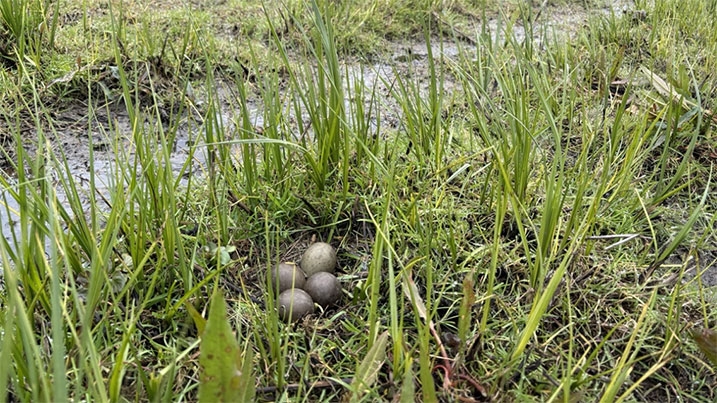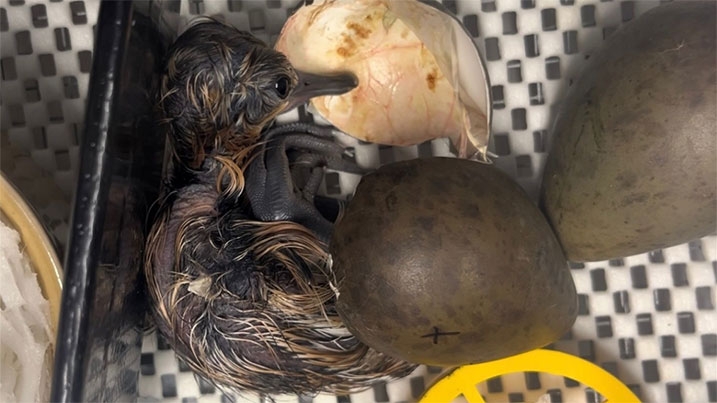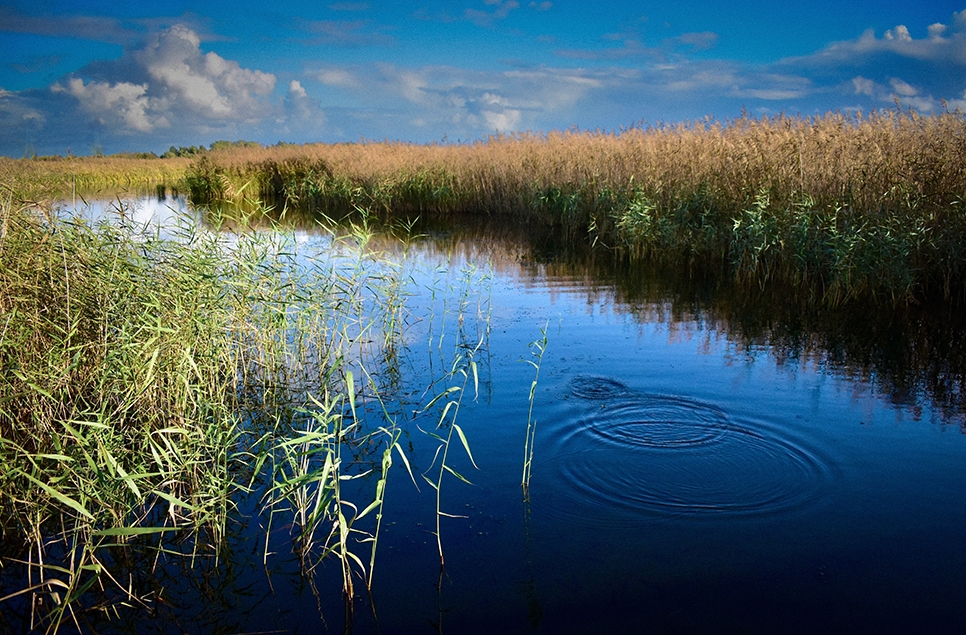First steps towards a brighter future
Spring is in full swing now, soft green growth underfoot, bursts of colourful wildflowers and chirps and squawks of new life. This year some of that new life signals the first major milestone for one of our newest projects, Godwit Futures. This programme, funded by Natural England, aims to save an incredibly vulnerable population on the brink of extinction. The class of 2024 just hatched earlier this month and are taking their first steps towards a brighter future.
Migrating thousands of miles from their winter homes in West Africa, the subspecies of black-tailed godwits that breed in the UK are incredible birds that live a precarious life. Every year these large, elegant wading birds arrive on British shores, returning to the wetlands where they first met their partners at in the hopes of bringing new godwits into the world. The total area and variety of these beautiful fenland sites that the godwits rely on have been drastically reduced by draining to provide land for agriculture. With less and less suitable habitat available to these breeding pairs they’re increasingly isolated and vulnerable to predation.
Despite their struggles, eventually a handful of breeding pairs produce small clutches of eggs, tinged with the same brown and green hues of their wet grassland homes. Like all bird eggs there’s a vulnerability to them, just a thin, porous layer of calcium separates the future of a species from a risky world outside. Godwit eggs though are especially vulnerable, being laid in ground nests and in locations vulnerable to sudden floods that are becoming more frequent and more extreme thanks to man-made climate change. But there is hope.

One of the ways that Godwit Futures aims to change the fortunes of British black-tailed godwits is through headstarting. Headstarting is the practice of taking eggs from the wild, to incubate them and protect the hatchlings over their first, most treacherous steps of life, before releasing them back into the wild to boost the wild population. And it’s what found William Costa, from WWT’s Conservation Breeding Unit, excitedly checking on eggs through all hours of the night earlier this month, listening out for the tell tale tapping and scratching of tiny beaks that suggest hatching is imminent.
Around 7 am May 12th, the sound of movement within the eggs became more frantic and Will noticed the first cracks appearing. 24 hours later with one big stretch the first of the class of 2024 had pushed open their temporary home and emerged into the world. The first sight of a newly hatched godwit is a ball of wet feathers. With a disproportionately large beak and huge scaly legs making them look far more like their prehistoric ancestors, dinosaurs, than the adorable bundles of fluff you’ll more easily recognise as a chick. Within a day, they’re able to wander around unsupported, happily feeding themselves and just a month later they’re ready for release, being able to fly and standing a much better chance to survive in the wild on their own.
Twenty of these hand reared godwits have a slightly different future ahead of them. They will join us at WWT Slimbridge to form the world’s first conservation captive breeding population. Once they have grown up and are producing their own chicks future generations of birds raised in captivity will bolster the wild population without the need for us to collect ‘wild laid’ clutches each year.

These future progenies will also be given the best possible chance of succeeding through vital habitat restoration work WWT along with partners including the Environment Agency and the RSPB have been working together to maintain and improve known breeding sites.
This work will help increase the quality and amount of the lush wet grassland sites that godwits depend on throughout the time they spend in Britain. They will also provide homes for other amazing wetland species such as common cranes, bittern and avocets, many of which are or have been a threatened species as well.
Between the excited peeps of new hatchlings fresh in our ears and the anticipation of more and better wetland sites to come, black-tailed godwits should have the best possible chance of a brighter future.
Header image: Recently hatched Black-tailed Godwit chick being weighed. Credit: William Costa/WWT



